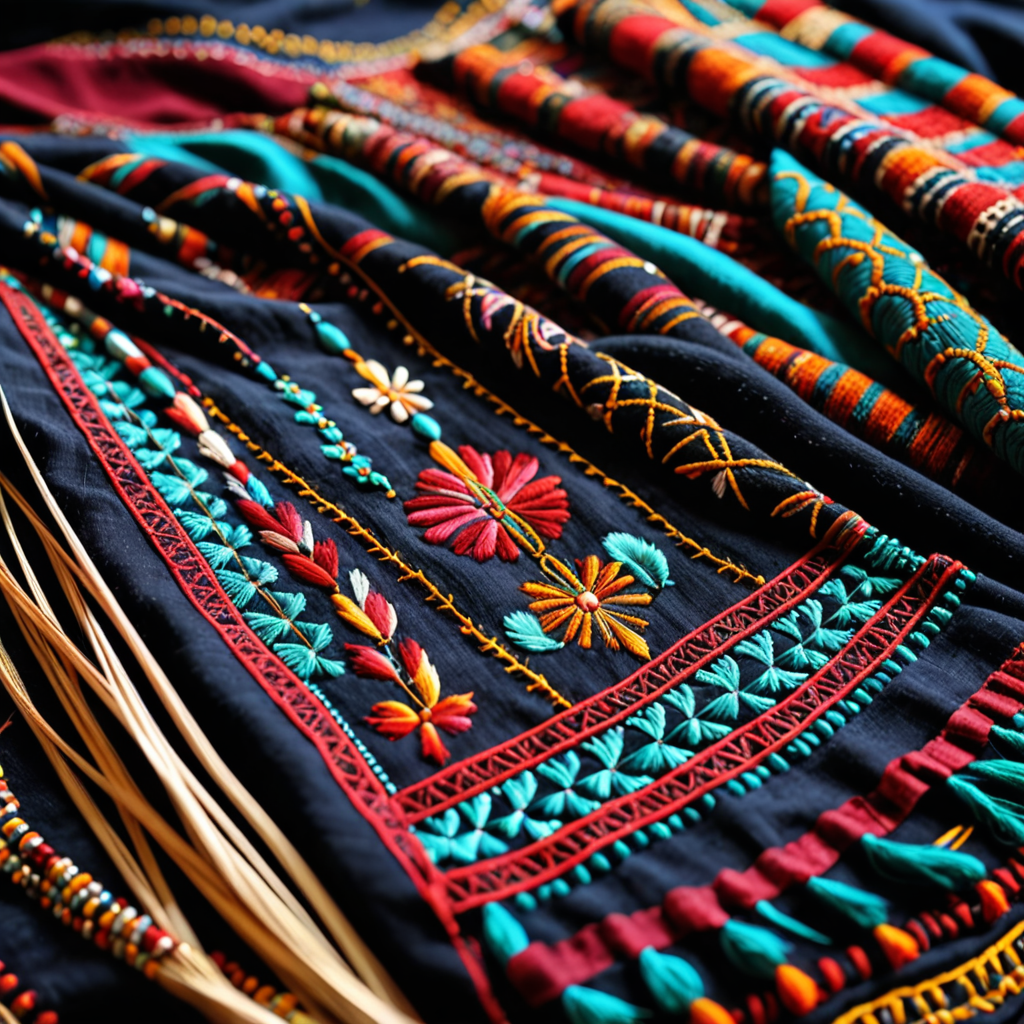
The Rich Tradition of Tuareg Embroidery and Textile Art
The Tuareg people, known for their nomadic lifestyle across the Saharan desert, have a rich cultural heritage that includes their exquisite embroidery and textile art. Let’s delve into the intricate beauty and cultural significance of Tuareg handiwork.
The Art of Tuareg Embroidery
Embroidery is a revered art form among the Tuareg people, primarily practiced by women. Traditional Tuareg embroidery often features geometric patterns and symbols that hold deep cultural meanings. Each stitch tells a story, reflecting the history, beliefs, and identity of the artisan and her community.
Materials and Techniques
Typically, Tuareg embroidery is done on leather or cotton fabric using vibrant threads in shades of blue, indigo, and red. The intricate designs are painstakingly created using techniques such as cross-stitch, satin stitch, and running stitch, showcasing the skill and creativity of the artisans.
Symbolism and Meaning
Every motif in Tuareg embroidery carries symbolic significance. For example, the sun represents prosperity, while the palm tree symbolizes life-giving water in the desert. These motifs not only beautify the textiles but also serve as a means of communication and cultural preservation.
Textile Art of the Tuareg
In addition to embroidery, the Tuareg people are renowned for their skill in creating exquisite textiles. From intricately woven carpets to vibrantly dyed fabrics, Tuareg textile art reflects a deep connection to nature, community, and tradition.
Color Palette and Designs
The color palette of Tuareg textiles is often inspired by the desert landscape, featuring earthy tones like brown, ochre, and sand dune beige. Designs vary from simple stripes to complex geometric patterns, each conveying a story or representing a cultural symbol.
Preservation of Tradition
Despite the challenges of modernization and globalization, the Tuareg people continue to preserve their rich tradition of embroidery and textile art. By passing down these skills from generation to generation, they ensure that their cultural heritage remains alive and thriving.
Appreciating Tuareg Embroidery and Textile Art
Through their exquisite handiwork, the Tuareg people showcase not only their artistic talent but also their deep-rooted connection to their heritage and land. By appreciating and supporting Tuareg embroidery and textile art, we can help sustain this centuries-old tradition for generations to come.
Frequently Asked Questions about Traditional Embroidery and Textile Art of the Tuareg People
What is Tuareg Embroidery?
Tuareg embroidery is a traditional craft practiced by the Tuareg people of the Sahara Desert. It involves intricate hand-stitching on leather, fabric, or clothing items using vibrant colored threads to create geometric patterns and symbols that hold cultural significance.
What materials are typically used in Tuareg Embroidery?
The Tuareg people often use leather, cotton, or wool as the base materials for their embroidery work. They then incorporate vibrant threads made of silk, cotton, or wool to create intricate designs that reflect their nomadic lifestyle and rich cultural heritage.
What are some common motifs in Tuareg Textile Art?
Common motifs in Tuareg textile art include symbols like the crossroads (Takaradutt), the desert lizard (Takarkoumbet), and the eight-pointed star (Takarart). Each motif carries specific meanings related to protection, prosperity, or spiritual beliefs, showcasing the Tuareg people’s deep connection to their environment and history.
How is Tuareg Embroidery and Textile Art preserved?
The art of Tuareg embroidery and textile art is passed down through generations within Tuareg families. Efforts by local artisans and organizations


